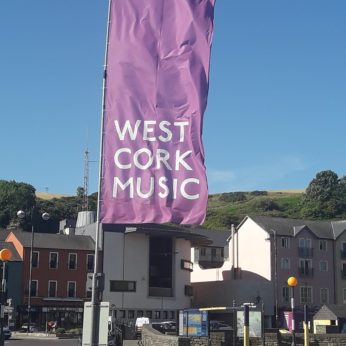Composer: Wolfgang Amadeus Mozart (b. 1756 - d. 1791)
Performance date: 08/07/2017
Venue: St. Brendan’s Church
Composition Year: 1782
Duration: 00:23:40
Recording Engineer: Richard McCullough, RTÉ lyric fm
Instrumentation Category:Small Mixed Ensemble
Artists:
Peter Whelan -
[bassoon]
Amy Harmon -
[bassoon]
Hervé Joulain -
[horn]
Christoffer Sundqvist -
[clarinet]
Susanne Schmid -
[horn]
Mathias Kjøller -
[clarinet]
Olivier Doise -
[oboe]
Armel Descottes -
[oboe]

All
of us, who take lascivious pleasure in Mozart’s writing for wind
instruments, owe a great debt to the quirk of Imperial taste that saw
the establishment of an official wind octet made up of members of the
Court Opera Orchestra in Vienna. Their job was to play wind band
arrangements of operas in the Imperial repertoire as Tafelmusik.
This delightful custom originated in the early 1780s and ensured that
there was a nucleus of exceptionally skilled wind players in the
opera orchestra. This had a sensational effect on Mozart, who
naturally seized the opportunity to write for these brilliant
instrumentalists. So from out of this dinner-time entertainment we
have inherited a whole galaxy of wind serenades as well as the
wonderful wind writing that curls through Mozart’s operas,
symphonies and, in particular, his piano concertos.
Much
has been written about the C minor key of this work being unsuitable
for the genre of Nachtmusik,
but
the sonorous and grandiose unison opening bars rather bely this
criticism.. This stately introduction leads by way of gently
questioning phrases directly into the Allegro and the first subject
dominated by its dotted rhythm. The second subject opens to a moment
of pure bliss: an anticipatory pause before the last figure of the
first group is taken by the oboe, modulated and transformed to the
new theme as the clarinets enter underneath with an exquisite
chirruping figure. This is later given to the bassoons with equally
magical effect. The exposition repeat gives another chance to hear
this moment of perfection, which is differently treated in the
recapitulation. The development is curiously downbeat and short
before the introduction returns in full sonority to lead us a
different path through the now familiar material.
Mozart
was sufficiently proud of this work to re-score it for string quintet
six years later when he needed a companion work for the G minor and C
major Quintets. In the strings the minor key is more dominating
whereas with the winds it seems to be but one of the extraordinary
textures that Mozart extracts from his eight instruments. The Andante
seems to be cast in one sinuous legato line as the voices weave and
interweave in their delicious song. The Minuet is more angular, even
harsh, despite attempts by the clarinets to restrain the oboes. The
Trio is a victory for tranquillity and gentleness so the return of
the Minuet is even more abrasive.
The
Finale is a virtuoso demonstration by Mozart of his compositional
woodwind tricks, produced one after another like rabbits out of the
hat including a gorgeous interlude led by the horns. It is as though
we have been let into the composer’s laboratory and shown how to
mix the potions. Even in the final run to the finish, he cannot
resist pausing for a last surprise decorative flourish.
Francis
Humphrys
Copyright © 2025 West Cork Music. All rights reserved.
Designed and developed by Matrix Internet